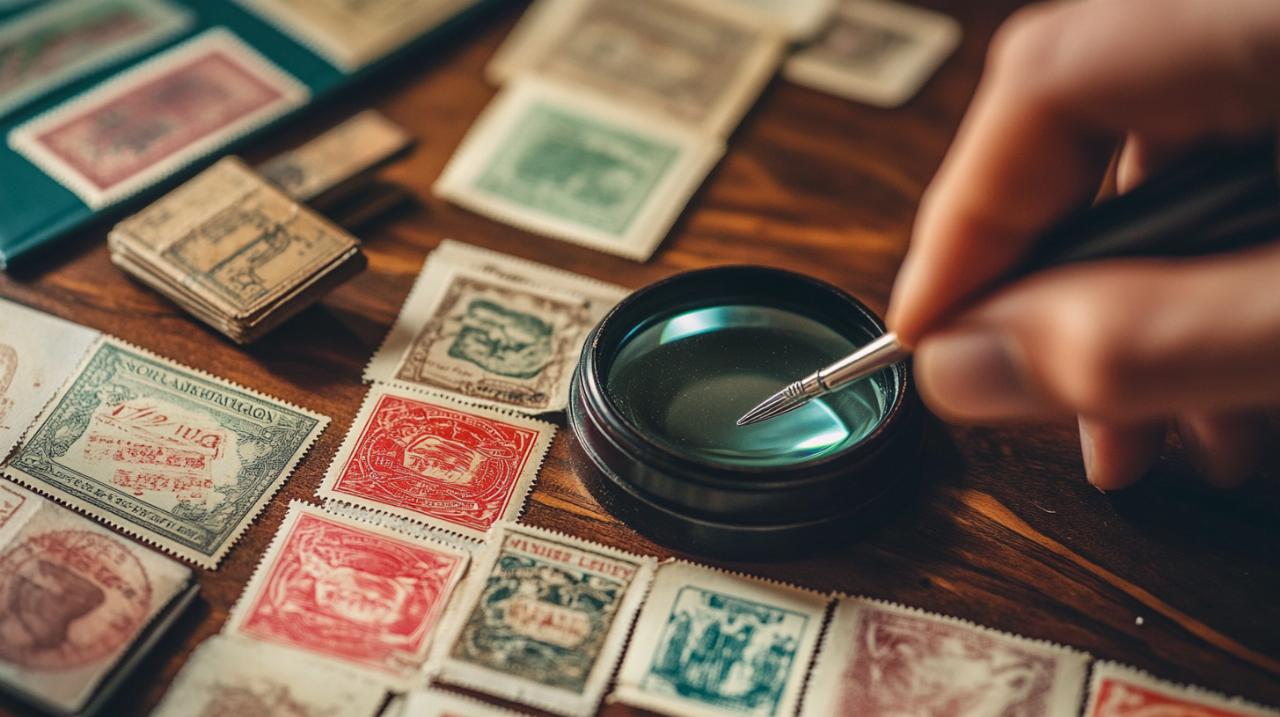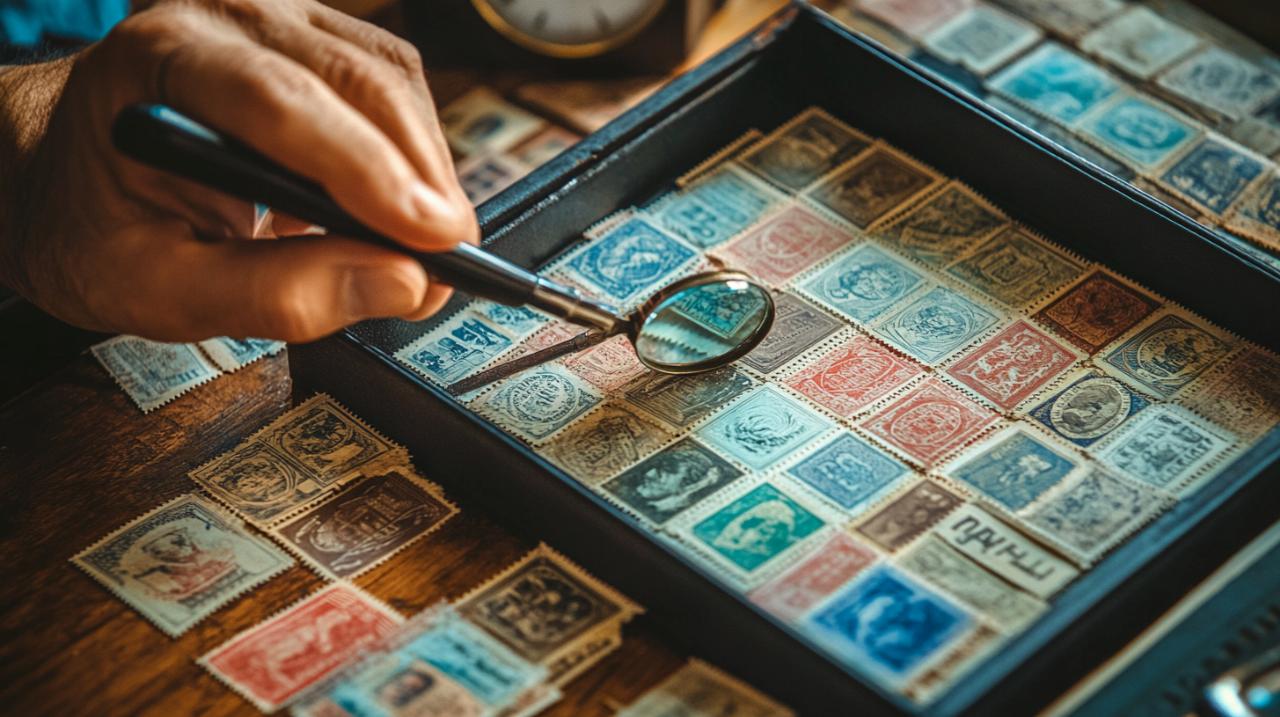
Are you an avid philatelist with a treasure trove of stamps? Uncovering their hidden value can be an exhilarating experience, especially when armed with pertinent information about expert appraisal and selling tips. This step-by-step guide aims to provide comprehensive insights into unlocking the value of your stamp collection.
Understanding the basics of stamp valuation
The role of rarity in determining value
One of the primary factors influencing the value of a stamp is its rarity. Stamps printed in limited numbers or those that have historical significance are typically more valuable. For example, the British Guiana 1c magenta, known for its scarcity, has fetched millions at auctions. Collectors often seek these elusive pieces, driving up their market price.
Condition matters
A stamp’s condition plays a pivotal role in its valuation. Pristine, mint-condition stamps command higher prices compared to those with visible wear and tear. Factors like centering, perforation quality, and color vibrancy impact this aspect. Hence, preserving stamps in a controlled environment away from direct sunlight and humidity is vital.
Historical and geographical significance
Stamps that depict significant historical events or figures tend to be more prized. Similarly, rarities from specific countries, particularly those with unique printing errors or anomalies, can fetch higher prices. A notable example is the Inverted Jenny from the United States, where the airplane depicted on the stamp was mistakenly printed upside down.
The art of expert appraisal
An appraiser’s expertise ensures an accurate valuation of your collection. Opting for certified professionals accredited by recognized philatelic organizations can provide reliable assessments. These experts leverage their extensive knowledge and access to industry resources to determine the true worth of your stamps. For example, https://www.davidfeldman.co.uk/ is renowned for its specialization in philatelic evaluations.
Choosing the right appraiser
An appraiser’s expertise ensures an accurate valuation of your collection. Opting for certified professionals accredited by recognized philatelic organizations can provide reliable assessments. These experts leverage their extensive knowledge and access to industry resources to determine the true worth of your stamps.
Components of a professional appraisal
A comprehensive appraisal goes beyond a simple estimate. Experts evaluate each stamp based on several criteria including rarity, condition, and provenance. Moreover, they provide detailed written reports, which can be essential for insurance purposes or resale transactions. Understanding these components helps in making informed decisions regarding your collection.
Periodic reassessment
Market trends in philately can shift over time. Regular reassessment of your stamp collection by an expert ensures its valuation remains current. Economic factors, emerging collector interests, and new discoveries within the field frequently influence stamp values. Staying updated with periodic appraisal guarantees you have the most accurate and advantageous evaluation.

Selling strategies for maximizing value
Private sales versus auctions
Deciding between private sales and auctions requires consideration of various factors. Private sales might offer a quicker sale process but potentially at a lower price. Auctions, especially well-publicized ones, can attract multiple bidders, often driving up the prices. Renowned auction houses with specialization in philately, like Sotheby’s or Christie’s, can facilitate reaching a broader audience of serious collectors.
Online marketplaces and forums
With the advent of digital platforms, selling stamps online has become increasingly popular. Websites dedicated to collectibles allow sellers to list their items for a global audience. Participating in philatelic forums also provides opportunities to network with fellow collectors and potential buyers, enhancing the prospects of finding the right buyer for high-value items.
Documentation and presentation
When preparing to sell, meticulous documentation and appealing presentation can significantly improve chances of achieving higher bids. Clear images, detailed descriptions, and authenticity certificates boost buyer confidence. Ensuring each listing highlights the unique aspects and comparative advantages of your stamps helps them stand out in competitive markets.
Leveraging professional networks and associations
Joining philatelic clubs and societies
Participating in philatelic clubs and societies offers numerous benefits, including networking with seasoned collectors and gaining insights into market trends. Organizations such as the Royal Philatelic Society or the American Philatelic Society host events, exhibitions, and seminars providing valuable exposure to both novice and experienced collectors.
Collaborating with dealers and brokers
Seasoned philatelic dealers and brokers possess in-depth market knowledge and can connect you with potential buyers. Collaborating with reputable dealers facilitates smoother transactions and often results in better pricing for your stamps. These professionals can also assist in marketing high-value collections through sophisticated promotional strategies.
Utilizing educational resources
Educational materials, workshops, and courses offered by philatelic institutions enhance understanding of appraisal and selling processes. Staying informed about authentication techniques, preservation methods, and market dynamics empowers collectors to make educated decisions regarding their collections. Engaging with these resources enriches your expertise and boosts the overall value of your pursuits.
Tips for maintaining and preserving your collection
Storage solutions
Effective storage solutions are imperative for maintaining the pristine condition of your stamps. Using acid-free albums and stock books, along with protective sleeves, prevents damage from environmental factors. Storing your collection in a climate-controlled area further preserves its quality over time.
Handling practices
Proper handling techniques reduce the risk of damaging delicate stamps. Using tools like stamp tongs avoids transferring oils and dirt from fingers. Additionally, examining stamps on clean surfaces free from contaminants minimizes the chance of inadvertent harm. Adhering to these practices ensures longevity and sustained value of your collection.
Regular inspections
Conducting regular inspections aids in early detection of issues such as mold, fading, or pests. Timely intervention can prevent minor problems from escalating into significant damages. Routine checks using appropriate lighting and magnification reveal details that might otherwise go unnoticed, facilitating prompt corrective measures.
The journey of uncovering hidden gems
Research and exploration
Embarking on a treasure hunt within your own collection involves meticulous research and exploration. Investigating the origins, production nuances, and historical contexts of your stamps unearths fascinating stories that enhance their appeal. Utilizing philatelic literature and catalogues serves as a valuable tool in identifying rare or noteworthy stamps.
Comparative analysis
Engaging in comparative analysis with other collections or reference guides sharpens your ability to discern valuable traits. Observing market listings, auction results, and scholarly articles cultivates a nuanced understanding of different attributes that contribute to a stamp’s value. This analytical approach equips you to recognize hidden gems with greater precision.
Sharing discoveries
Sharing your discoveries with the broader philatelic community not only fuels collective knowledge but also fosters connections with fellow enthusiasts. Contributing to discussions, publishing articles, or presenting findings at conferences amplifies your profile within the sector. Esteemed collectors often find fulfillment in contributing to the enrichment of philatelic heritage through their experiences and insights.
Navigating market trends and forecasting
Keeping abreast with trends
Monitoring market trends enables anticipation of shifts in demand and value within the philatelic world. Subscribing to industry journals, attending exhibitions, and engaging with online communities provide valuable updates on evolving preferences. Being attuned to these trends affords strategic advantages whether buying, selling, or curating your collection.
Economic influences
Broader economic factors invariably impact the market dynamics of collectible stamps. Inflation rates, currency fluctuations, and economic downturns shape purchasing power and investment behaviors among collectors. Understanding these influences assists in making calculated decisions related to acquisitions or dispersals within varying economic climates.
Expert forecasts
Philatelic experts occasionally publish forecasts based on extensive market analyses. Their predictions, grounded in empirical data and historical patterns, offer guidance on future movements in stamp values. While no forecast is absolute, leveraging expert insights alongside your own observations cultivates informed perspectives on potential market developments.